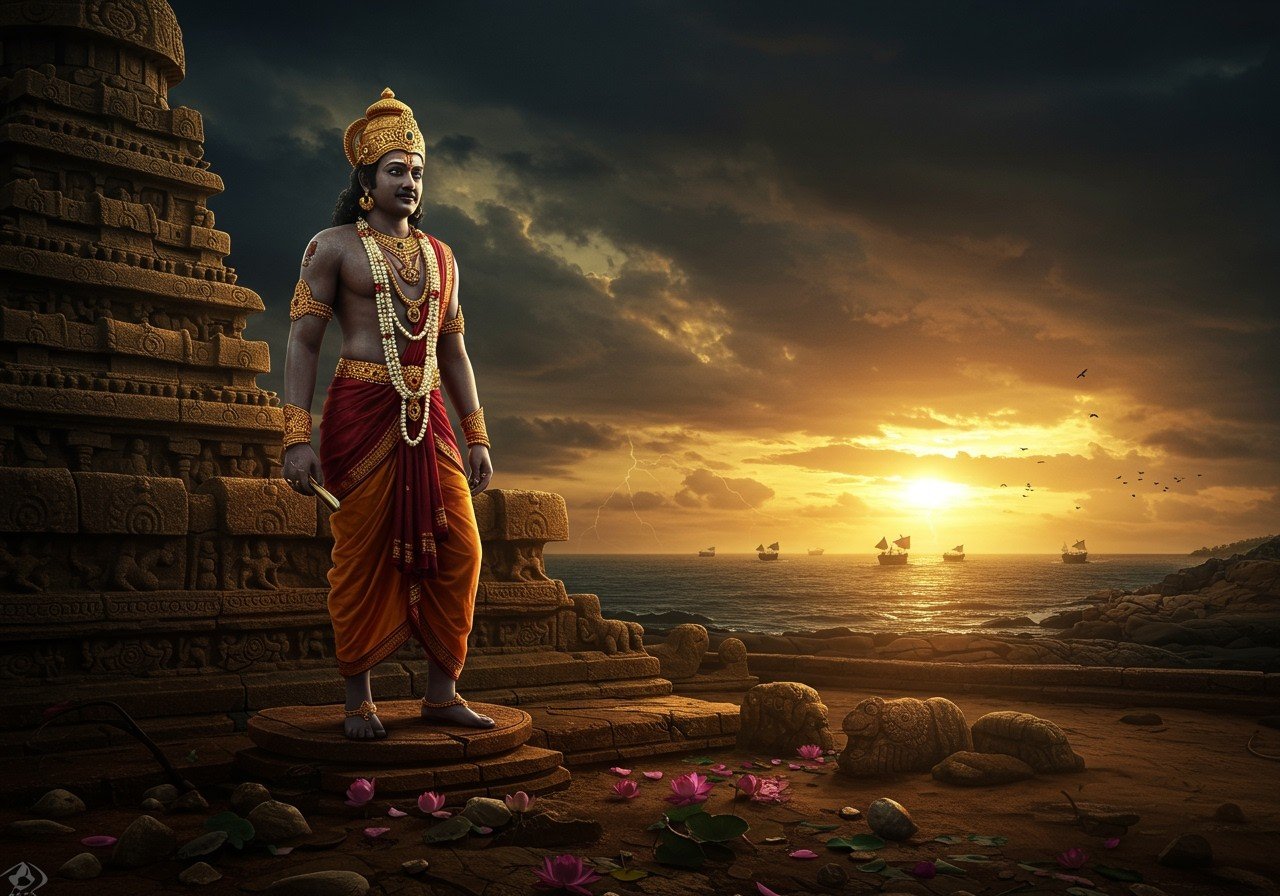
The Pallava Dynasty, renowned for its contributions to art, architecture, and culture, reigned over South India from 275 CE to 897 CE. This blog delves into the final chapter of their reign, focusing on Aparajita Varman, the last Pallava king, and the circumstances that led to the dynasty’s decline.
Historical Overview
The Pallavas rose to prominence in the 3rd century CE, establishing themselves as a major power in South India. Key rulers like Mahendravarman I and Narasimhavarman I solidified their position, particularly in Kanchipuram. The dynasty interacted with contemporary powers such as the Chalukyas and Pandyas, leaving a significant mark on the region’s cultural landscape.
Aparajita’s Rise to Power
Aparajita Varman, also known as Aparajita, ascended to the throne around 880 CE. He was the son of Kampavarman and the Ganga princess Vijaya. Aparajita’s reign was marked by internal strife and the looming threat of emerging powers, notably the Cholas. Despite the challenges, he strove to uphold the Pallava legacy.
Military Conflicts and the Dynasty’s Decline
Aparajita’s rule was defined by crucial military engagements, particularly against the rising Chola Dynasty. The Battle of Sripurambiyam in 897 CE proved decisive. Aparajita was defeated and killed by Aditya I, marking the end of Pallava reign over Tondaimandalam and the annexation of their territories by the Cholas.
Cultural and Architectural Contributions
Despite the political turmoil, Aparajita continued the Pallava tradition of patronizing art and architecture. Temples like the Kailasanathar Temple stand as testaments to the artistic achievements of the era, influencing architectural styles in subsequent South Indian dynasties.
Succession and Legacy
Following Aparajita’s defeat, the Chola Dynasty emerged as the dominant power in South India. The Pallavas, however, left an enduring legacy. Their contributions to art, architecture, and culture significantly shaped South Indian history and heritage. Aparajita’s reign, though marking the end of the dynasty, represents a pivotal point in the region’s historical narrative.
Exploring Pallava Heritage with Poojn.in
Poojn.in, India’s leading cultural goods and services store, offers a wide selection of products to connect you with the spiritual legacy of the Pallavas. Enhance your understanding and appreciation of this rich history with our curated collection:
- Lord Shiva Murti: Honor Lord Shiva, the principal deity of the Pallavas, with a beautifully crafted murti for your home. We offer various sizes and materials to suit your preferences. Explore our collection of Shiva murtis and bring the divine presence into your space.
- Incense and Puja Supplies: Create a serene atmosphere for prayer and meditation with our range of incense, camphor, and other puja essentials. These items are carefully selected to enhance your spiritual practices and connect you with the traditions of the past. Discover our complete range of puja supplies.
Visit poojn.in today to explore our diverse collection and enrich your connection to India’s rich cultural heritage.
Further explore the Pallava Dynasty and its architectural wonders through our related blogs:
- Badami Cave Temples: Chalukya Dynasty Architecture
- Kandariya Mahadeva Temple: Religious Importance and History


